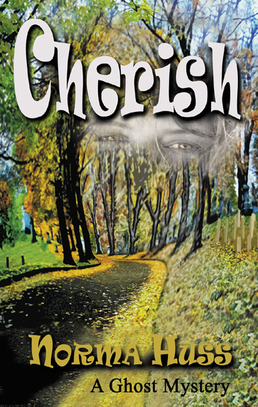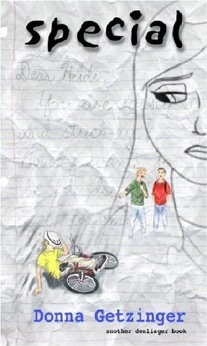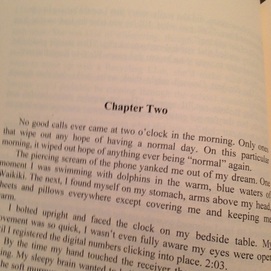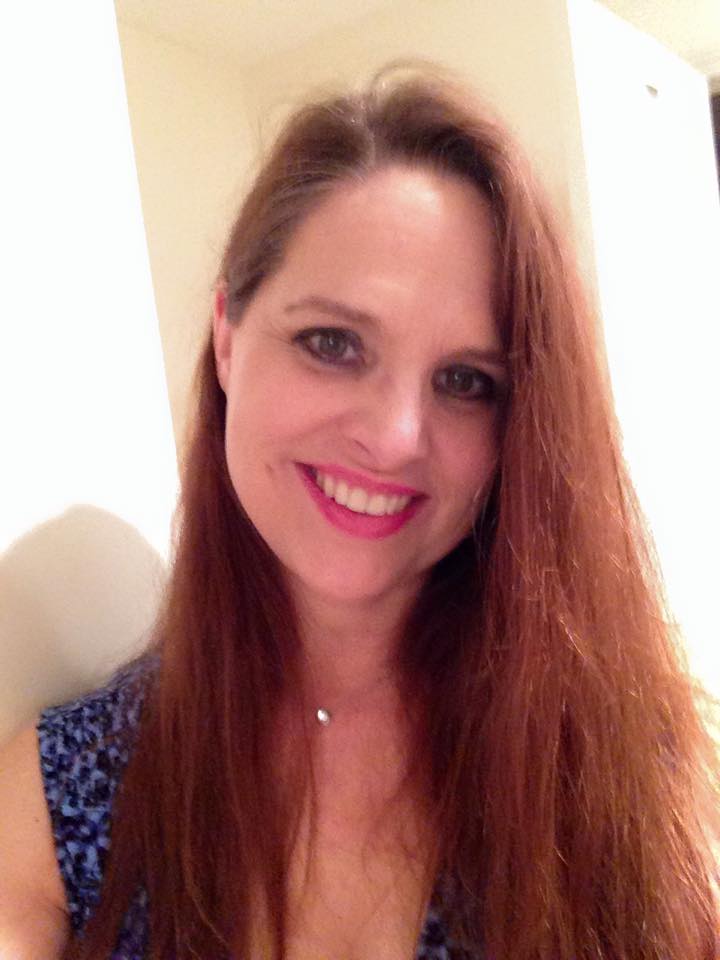|
Author Norma Huss is visiting to share her revision story about her new YA novel, Cherish. She took a manuscript decades old and overhauled it to make it more updated and relevant for today's teens.  From Norma Huss: Sandy Bottom Road. Yeah, that was the name. A mystery, with teenagers who discovered a skeleton, then uncovered the story about a teen that died in the 1930s. The teen was Cherish, who ached for a car of her own. She had doting parents -- a mother who baked cookies and a father who was the mayor of a town named for his ancestors. The present-day teens were Kara and Tammy, with boyfriends David and Russ. And that story (although one publisher showed a bit of interest for a while) gathered moss in a bottom drawer. My own teens grew into their twenties and beyond. And their children came along, and also grew, while I switched my writing from stories with my children as my audience to stories that I wanted to read: mysteries for adults. Until I realized by teenage grandchildren might like one of Grandma's stories. That idea last until I started reading one of my near-successes that had sentences like: "David might call after she left the house, and she'd miss it." Oh, really? One thing I absolutely could not do -- take out that pile of paper, key it into my computer, and just edit it here and there to update it a bit. This manuscript required much more than a rewrite. In fact, by the time I was finished, there was little left of the original story. No skeleton dug out of the ground. Nobody named Kara, Tammy, or David. Nothing from 1930. There were oodles of dropped ideas: a tea party of elderly women, a fire in an abandoned building, a demonstration in city hall. Other events were added: the Homecoming football game and Queen contest, a class trip to the cemetery by the Local History class, the sophomore Halloween party. Names were changed to eliminate the outdated trends. Kara became Kayla. Tammy became Dani. And, to eliminate two main characters starting with the same letter, David became Michael. I even switched boyfriends on my unsuspecting characters. Dani got the dreamboat Michael, while Kayla got the senior Russ. The 1930s changed to1946 because I wanted living characters from that age. All of the original story took place in the present time. The new story takes place in both the presents and 1946. The most major change of all was adding the ghost and reason for her appearance. Her body was not discovered under the ornate gravestone. She needed that body. Or, A body. Which is why Kayla ends up living someone else's life in 1946 and knowing that she's about to die. That is also why Cherish is living as a 21st century teen and ruining Kayla's life. Norma Huss calls herself "The Grandma Moses of Mystery". Her mysteries for adults take place near Chesapeake Bay where she and her husband sailed for years. To complete the generational stretch, besides her new YA mystery, she also has a non-fiction title, A Knucklehead in 1920s Alaska. This was taken from her father's memory of a 19-year-old teen trying to earn money for college. Cherish is available in print and ebook from Amazon. Norma is hosting a giveaway on Goodreads through October 7th, 2014. Follow Norma Huss at: Amazon Author Page Goodreads
2 Comments
 I have some good news: I’ve sold another book! Schoolwide Inc. will be publishing my MG novel No One Needed to Know in their digital library targeted to schools and educators next year. How this all came to be is a story that fits neatly with my Write and Rewrite themed blog. Back in 2004, a tiny little publisher called Denlinger’s Publishers took on my MG novel Special. This was a story based loosely on my experience as a girl with an older Autistic brother. The year this book was released was a hard year for me personally, as my 1st marriage dissolved and I suddenly became a single mother of a 3-year-old and had 3 jobs to make ends meet. I had little time to promote. Then a series of hurricanes hit Florida a couple years later, and they destroyed Denlinger’s facility. They went out of business, and my book went out of print. What to do with a novel that has been published and discarded? I put it in a drawer for a while. Ten years later, I decided that it was time to pull that book out again and tinker with it. I rewrote it by changing it to first person and updating it a touch. Then I started submitting it again under a new title and my new name. I learned about Schoolwide Inc., a 20 year old company dedicated to promoting literacy in classrooms and helping reluctant readers. They were looking to start a line of original content and were open to books that had gone out of print. I sent them mine. To my elation I heard back pretty quickly from one of the editors who told me he loved my book. He wrote glorious things like, “The world needs more books like this. It not only entertains, it educates. And it educates because you have written such an engaging story, with an authentic and sympathetic narrator.” But he followed that with: “While I am very excited about this project and hope to continue working with you on it, I feel that in its current form it is not ready for us to accept for publication.” Oh no! What? “I am inviting you to revise the work and resubmit it for our consideration.” Later, he qualified that it would be a “substantial revision”. His challenge to me was that if I revised the book (mostly by attacking the 2nd half of the book), he would consider publishing it. Oh, and he needed it done by October 1st in order to make the list coming out next year. I looked at the notes he gave me, and they all made perfect sense. I got right to work. Mostly what he wanted was for me to get away from anything that sounded like I was teaching the reader about Austism or Special Needs and stick to the immediacy of the story. I wound up discarding quite a bit, but I added so much more. I wound up tacking on 11,000 words to the book before I was done. I sent it back a couple weeks ago. Today I signed the contract and stuck it in the mail. I’m beyond thrilled that this story gets a second life and will be read by children in schools throughout the country. They have plans to do print versions down the road as well.  A few weeks ago, I wrote this essay as a guest post on the blog by author Nancy Pennick. In case you missed it there, I thought I'd repeat it here. “No good calls ever came at two o’clock in the morning. Only ones that wipe out any hope of having a normal day. On this particular morning, it wiped out hope of anything ever being “normal” again.” This was supposed to be the opening line of my novel Cry of the Sea. I was so proud of it. So proud! Yes, I envisioned its brilliance being quoted as one of the great opening lines of YA literature at many a writer’s conference for years to come. I loved it so much that no matter what I felt about the rest of the chapter, I was determined to keep that first line. Why was I so sure? Or stubborn? I have attended so many writing workshops and read so many books and articles about the craft of writing novels. Several things have been drummed into my head. “Have a great opening line.” “Hook your reader from the first moment.” “Start where the action is.” “Start your novel where the protagonist’s life changes from its normal routine.” “Start on the day that is different.” And my favorite? “Get to the main point of the plot before page 30.” So, I had this idea for a story about a girl who discovers mermaids caught in an oil spill. Based on everything I’ve learned, that meant she had to find the mermaids before page thirty. I also felt strongly that the story needed to start in the moments just before finding those mermaids. How best to do this? I thought it would be exciting to have her wake up to the alarming news of the oil spill and have her rushing out the door with her environmentalist father to get to the beach. There were some problems with my idea. I had to somehow very quickly introduce my main character and her father, their relationship, and the reason they were going to an oil spill. There was a lot of information to share to have the story make any sense. I thought I’d be clever and get some of that out with a little flashback to the night before in order to explain a few things. Only, that flashback grew from a few paragraphs to a dozen pages before coming back to the big rush to the beach. More important writing advice haunted me: “Don’t have a big flashback in the opening chapter.” “Don’t info dump.” “Show don’t tell.” Oh, poo on all of that. I had an awesome opening line! It had to stay this way. Well… I sent my first chapter to a few agents and editors. No one sent me back praise for my glorious first line. No one requested more pages either. I grew frustrated. Yet, I didn’t revise. I’d already revised the book over and over, and I didn’t know how to do it again. Not without ruining my opening line. The writing advice I knew conflicted in my brain. Bless the team at Fire and Ice, though. They stumbled past my opening chapter and read on to find the story that followed it. They offered to publish the book and sent Megan Orsini, my editor, to help me out. Her very first note to me: “I think the flashback in the opening chapter is too long. I forgot it was a flashback. Why don’t you make that the opening chapter and put the phone call and oil spill scene in chapter two.” But… but… That would put my opening line in chapter two. Do you hear me whining? I knew Megan was right, and I followed her advice. I wound up completely rewriting the whole opening to my book. With her guidance, I actually revised the opening chapter six times and the first page an additional two after that. Now my opening line is: “You ready to see how the next big change in your life is going to look” as asked by June’s father. No, this won’t put me in any lists of great opening lines, but it works. The book works better too. And guess what? We still meet mermaids on page 22. Yay! So, friends, what I’ve learned: don’t marry your words and do trust your editor. With a sly wink, however, I’m happy to announce that a woman who recently reviewed Cry of the Sea on her blog included a quote from my book. Which of my words did she use? My opening line – of Chapter Two. |
D. G. DriverAward-winning author of books for teen and tween readers. Learn more about her and her writing at www.dgdriver.com Archives
July 2024
Categories
All
|
Author D. G. Driver's
Write and Rewrite Blog
“There are no bad stories, just ones that haven’t found their right words yet.”
A blog mostly about the process of revision with occasional guest posts, book reviews, and posts related to my books.

 RSS Feed
RSS Feed